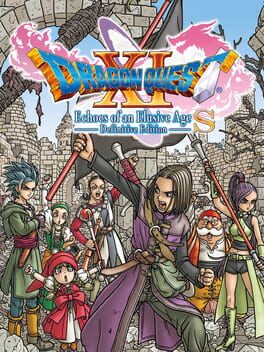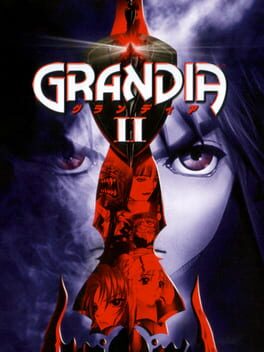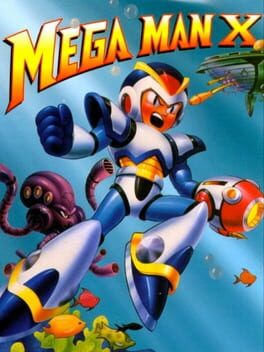tonyhoro
Bio
Horo do Canal Horo Joga
Horo do Canal Horo Joga
Badges

Loved
Gained 100+ total review likes

Popular
Gained 15+ followers

Best Friends
Become mutual friends with at least 3 others

Liked
Gained 10+ total review likes

Noticed
Gained 3+ followers

Gamer
Played 250+ games

Early Access
Submitted feedback for a beta feature

N00b
Played 100+ games
Favorite Games
357
Total Games Played
001
Played in 2024
089
Games Backloggd
Recently Played See More
Recently Reviewed See More
After years without a remarkable new game in the series—the last one being Forgotten Sands back in 2010—Ubisoft decided to revive the forgotten Prince of Persia franchise, this time with a smaller investment than their AAA Assassin's Creed titles, but this one is perhaps incredibly better.
The Lost Crown was produced by Ubisoft Montpellier, a studio that has not worked on AAA games for a long time, and was mainly responsible for Rayman games in the late UbiArt era, along with some Just Dance and the acclaimed Beyond Good & Evil. I have the impression that this Prince of Persia revival was the idea of the studio heads themselves, given their history of creating smaller-scale games, and it turned out to be a perfect match.
2D gameplay
It's difficult to write any text about this game without mentioning the already tired—but still relevant—term "metroidvania." This is, if I'm not mistaken, the first game in the series that follows this style of non-linear exploration, and it's impressive how Ubisoft never took the series in this direction before, even during the era of handhelds like GBA or Nintendo DS, as it fitted perfectly with those platforms.
Our hero, Sargon, explores Mount Qaf to try to save the Prince—who is not the protagonist this time—along with the other Champions of the Persian kingdom, but ends up trapped in the mountain's curse. There, time passes strangely, and everyone present becomes confused and lost in this mysterious mountain.
The Mount Qaf would be this time's Dracula's castle, with various diverse environments such as forests, sewers, towers, temples, and other places that do not limit themselves to the sandy environments that always illustrate the series'' previous iterations.
The map is in the Metroid/Castlevania style, with places that cannot be explored immediately and must be visited later. A very cool thing here is an internal function of the game to take screenshots of places and save them in the map location you want to revisit later. This way, points of interest can be recalled at any time during the journey. Those screenshots are limited and there are collectables that enable the player to take more of those when he gets further into the game.
Story and Setting
As already mentioned, the Prince is not the protagonist this time, but Sargon, a Persian warrior who, after a fierce battle with his war comrades, sees his prince being kidnapped by a general who fought by his side. Chasing her to Mount Qaf, everyone gets emprisioned in the mountain, and the adventure unfolds through encounters on the map throughout the game.
Not only enemies appear, but also other characters who will help you, like the Mage and the goddess Kaheva, who sell items and forge improvements for your weapons and accessories; Artaban, who teaches combos and new moves to Sargon, and the guide Fariba, a child who seems to know the entire game map and gives you guides not to get lost during the main quest.
The game's environments, as mentioned above, are quite varied, and the player doesn't get bored with repetitions of scenarios and themes. The map is HUGE, perhaps about 6 or 7 times larger than the castle in Symphony of the Night. This may explain the 25-hour duration of the game if the player follows only the main path.
Combat
One of the most enjoyable things about Prince of Persia: The Lost Crown is the combat; Sargon has several combos at his disposal, which can be chained with arrow shots, low blows, and aerial attacks, reminiscent of games in the Devil May Cry series at some points.
In addition, Sargon has special abilities that help him finish enemies faster and must be recharged with the parry system. Regarding the parry, the button press window to counter an enemy attack is generous on normal difficulty, but not all attacks are telegraphed, so even the simplest enemies on the map will require some attention from the player.
Differently from Symphony of the Night, this isn't the type of game where monsters are made of paper; each encounter can be decisive in sending you back a good chunk to the last checkpoint.
Quality of Life, Engine, and Other Details
This analysis was made on the PC, but it is known that the game runs smoothly at 60 FPS even on the Switch.
On the PS5 and PC, it can run at up to 144 FPS, making difficult parries easier and everything much smoother and more beautiful to watch.
Graphically the game is impeccable. Although it runs on Unity, the game does not suffer from common hiccups associated with misuse of the engine. Everything is very well animated, and the transitions between scenes are harmonious and subtle. The animations of special attacks and some cutscenes that run directly in the engine are also flawless.
The art style is reminiscent of Overwatch, with characters with strong but expressive features, clearly developed on 2D sketches that have been masterfully translated into 3D.
In addition, the game has native support for Dual Sense even on PC, displaying the Sony controller buttons without the need for external software for the game to recognize the controller.
A negative point for brazilian readers of this review is that Ubisoft left Portuguese out of the list of dubbing options. The text translation is great, but it would be perfect if we also had a dubbing in our language. Even Persian is present—which I find very fair—but portuguese is not one of the available options, unfortunately.
Soundtrack
The music of Prince of Persia: The Lost Crown is perhaps the weakest point. I remember very well the soundtrack of the Sands of Time game, which had Arabic tones, perhaps even stereotyped, but very enjoyable to listen to during exploration.
Here in The Lost Crown, the music is very subtle and not very remarkable. Even increasing the volume in the options, there is no standout track during gameplay. This can be considered a negative point because around the middle of the game, where exploration becomes more difficult and the player starts to walk in circles—if the guide option is not activated—hearing the same bland music leaves the experience a bit below what it could deliver, and maybe makes the player seek out a podcast or video to listen to on the second screen or on their phone.
Conclusion
With at least 25 hours of gameplay, Prince of Persia: The Lost Crown is a triumphant return to the series we thought was forgotten in Ubisoft's chests.
With flawless gameplay, ranging from combat to exploration where there are no design flaws, we have a well-rounded game that not only delivers in the quality of its structure but also in the technical aspect.
Running perfectly on all available platforms, the newest Prince's game shows the passion, dedication, and talent of Ubisoft Montpellier studio, which even with a smaller investment, delivered a product that competes head-to-head with even the best Assassin's Creed titles. And maybe beats them all.
Good sequel, but the storytelling could be a BIT less convoluted. Saga's mind place should be a little more automatized, since it adds little to the gameplay experience and in the end, just repeats what we see by playing the game. There's no feeling of satisfaction in 'deducting' the scenes, so it feels a little dull.
Combat is good in her parts, but Alan's chapters are kinda confusing. The whole 'scene change' gimmick didn't hit as good as Remedy expected to, leaving the player without knowing what plot should he use in each scene -- or if he should try every available plot in his disposal.
The ending is anti-climatic to say the least, and the real final boss fight is earlier in the game, since the ending is just more investigation and a final cutscene.
I'm leaning towards the thought that the story should've had a concrete ending, and leaving it open for a Part 3 doesn't seem very wise and not really honest toward an audience that already waited 13 years for the sequel.
I enjoyed for what it was, and there are plenty of good moments. A solid 7/10.
Combat is good in her parts, but Alan's chapters are kinda confusing. The whole 'scene change' gimmick didn't hit as good as Remedy expected to, leaving the player without knowing what plot should he use in each scene -- or if he should try every available plot in his disposal.
The ending is anti-climatic to say the least, and the real final boss fight is earlier in the game, since the ending is just more investigation and a final cutscene.
I'm leaning towards the thought that the story should've had a concrete ending, and leaving it open for a Part 3 doesn't seem very wise and not really honest toward an audience that already waited 13 years for the sequel.
I enjoyed for what it was, and there are plenty of good moments. A solid 7/10.
It's weird to see a Initial D game released before the anime, so the official version of the game lacks the classic Eurobeat soundtrack. This may take away half of the fun, but thankfully there's a mod that fixes it, which turns the game into a an early 32-bit version of the Arcade Stages that people are more used too.
The driving is kinda weird but its between the Special Stage and the Extreme Stage games in terms of handling.
It's perfectly beatable if you put some effort on it and memorize the turns in each race.
The driving is kinda weird but its between the Special Stage and the Extreme Stage games in terms of handling.
It's perfectly beatable if you put some effort on it and memorize the turns in each race.









